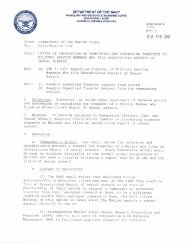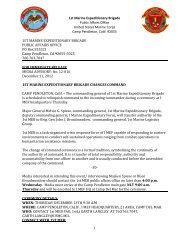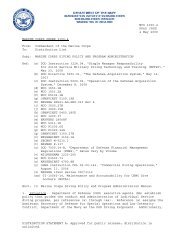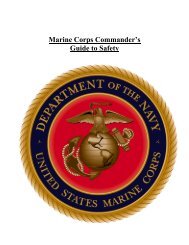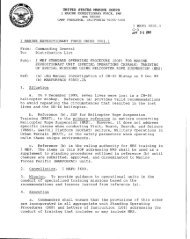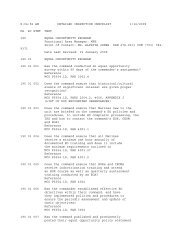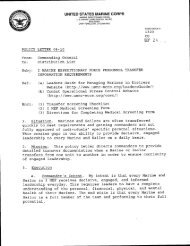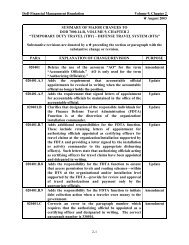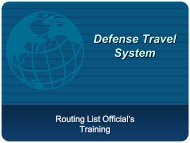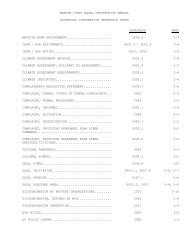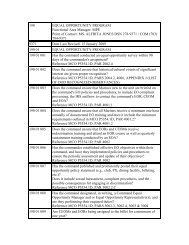personnel qualification standard (pqs) - I Marine Expeditionary ...
personnel qualification standard (pqs) - I Marine Expeditionary ...
personnel qualification standard (pqs) - I Marine Expeditionary ...
Create successful ePaper yourself
Turn your PDF publications into a flip-book with our unique Google optimized e-Paper software.
USMC Operations 112<br />
Urbanized areas, themselves, may be significant sources of future conflict. Cities<br />
historically are where radical ideas ferment, dissenters find allies, mixtures of<br />
people cause ethnic friction, and discontented groups receive media attention.<br />
Adversaries may focus on the capture of radio and television stations in an<br />
attempt to influence public opinion and attain their political goals. Our political<br />
leaders may take advantage to neutralize or stabilize some extremely volatile<br />
political situations, or to provide assistance to allies in need of support, by<br />
deploying U.S. forces into urban environments,<br />
MOUT effects the tactical options available to a commander. A built-up area is a<br />
concentration of structures, facilities, and populations, such as villages, cities,<br />
and towns, that form the economic and cultural focus for the surrounding area.<br />
o Cities. Cities are centers of finance, politics, transportation,<br />
communication, industry, and culture. They generally have large<br />
population concentrations ranging from tens of thousands to millions of<br />
people. Because of their psychological, political, or logistical value,<br />
control of cities have often been the scenes of pitched battles.<br />
o Multiple Avenues of Approach. Urbanized terrain is a unique battlespace<br />
that provides both attacker and defender with numerous and varied<br />
avenues of approach and fields of fire. The urban battlespace is divided<br />
into four basic levels: building, street, subterranean, and air Operations<br />
can be conducted from above ground, on ground level, inside buildings, or<br />
below the ground. Most operations will include fighting on all levels<br />
simultaneously.<br />
o Categories of Built-Up Areas. Built-up areas are generally classified as:<br />
Villages (populations of 3,000 or less)<br />
Strip areas (industrialized zones built along roads connecting<br />
towns or cities)<br />
Towns or small cities (populations of up to 100,000 and not part of<br />
a major urban complex)<br />
Large cities with associated urban sprawl (populations in the<br />
millions, covering hundreds of square kilometers).<br />
o Characteristics of Urbanized Areas. A typical urban area consists of<br />
combinations of the city core, commercial ribbon, core periphery,<br />
residential sprawl, outlying industrial areas, and outlying high-rise areas.<br />
Each of the urban area’s regions has distinctive characteristics that may<br />
weigh heavily in planning for MOUT. Most urbanized areas resemble the<br />
generalized model shown in Figure 1-2.<br />
112-7



